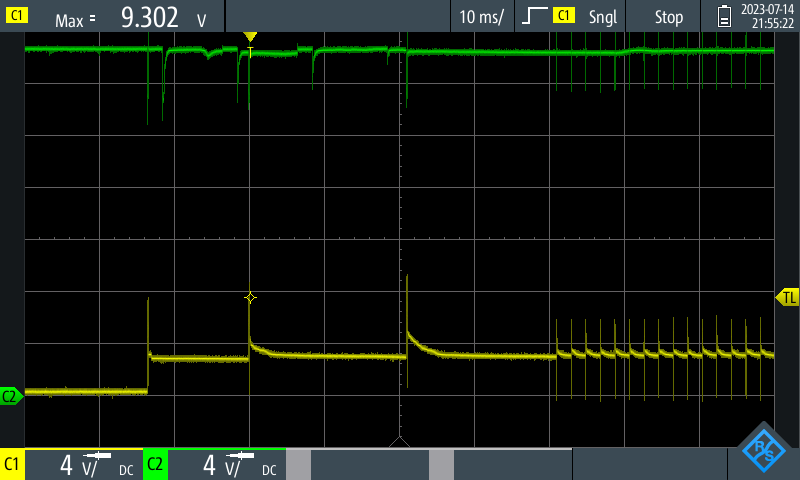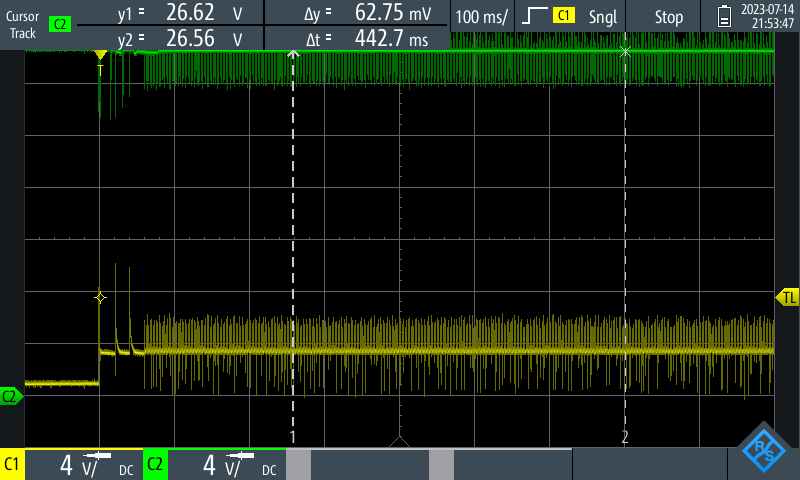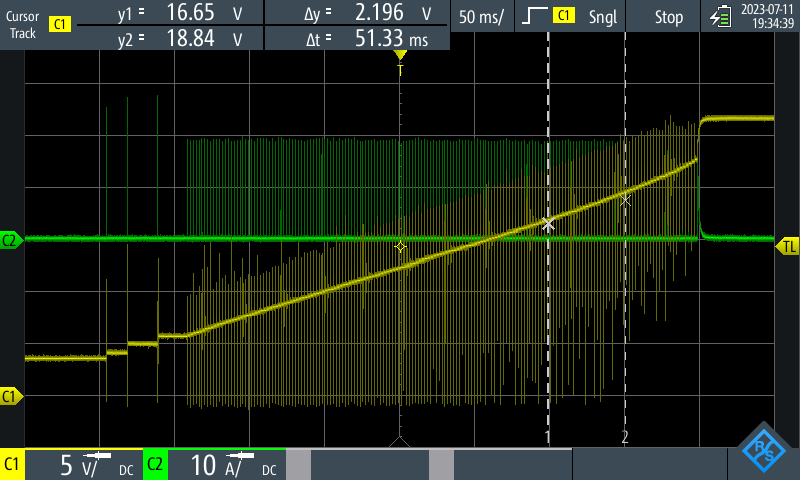Hello,
we are using the TPS27SA08-Q1 smart high side switch (referred to as HSS in the following) as an power distribution switch in a racecar for formula student. More specifically, we have a power distribution pcb where the current from a 24V Li-Ion Battery is distributed on 4 HSS. We have several wiring harnesses which then are connected to the 4 HSS. Mostly there is one wiring harness connected to one HSS, but as we have more wiring harnesses than HSS, we need to connect two wiring harnesses to one HSS as well. All wiring harnesses and the battery are connected to the same GND star point.
We have experienced some strange behaviour depending on the configuration.
First of all, each wiring harness works correctly, when it is connected to one HSS by oneself. But when we connect two wiring harnesses to the same HSS, there are problems.
I have attached two screenshots from the oszilloscope where two wiring harnesses are connected to one HSS. In green you can see the battery voltage, in yellow the output voltage of the HSS.
When setting EN high, the HSS tries to switch on but goes into fault state 3 times followed by retry. I assume this fault is caused by the overtemperature protection as we have high inrush currents (which I could see in another measurement). But I can't explain what's happening after that. Apparently the HSS switches on and off with a much higher frequency. The output voltage remains at around 3-4V. This state is then permanent. The EN pin stays high all the time, LATCH pin is permantly pulled low.
Do you have an idea what is happening here?
Regards,
Andreas




